Tactical Analysis: How Barcelona Edged Napoli to a Place in the Champions League Quarterfinals
Napoli faced off against Barcelona in the 2019/20 UEFA Champions League Round of 16, with the two sides drawing 1-1 in the first leg in Italy. The second leg took place six months later due to the COVID-19 pandemic, with Barcelona winning 3-1 via goals from Clement Lenglet, Lionel Messi and Luis Suarez. Barcelona would lose 8-2 to Bayern in the quarterfinal, whilst the following year would see them lose 5-2 on aggregate to PSG, exiting the Champions League at the Round of 16 for the first time in 14 years.
Back-to-back group stage eliminations followed for the Blaugranas under Xavi, but they would bounce back in 2023/24, finishing ahead of Porto, Shakhtar and Antwerp and booking a date with Napoli in the Round of 16. This time, Robert Lewandowski broke the deadlock for the defending La Liga champions, but Victor Osimhen would level things up for the defending Serie A champions. Once again, Barcelona prevailed 3-1 in the Estadi Olimpic Lluis Companys, with Fermin Lopez and Joao Cancelo scoring in quick succession, only for Amir Rrahmani to pull one back within a half-hour, but Lewandowski would seal the deal for the hosts with an 83rd-minute goal.
Eager to make his mark against Napoli, who were unbeaten in five games under new manager Francesco Calzona, Xavi’s team placed pressure on the visitors from the start, outnumbering Napoli in the midfield and pressing high up the ground. After starting the game in their usual 4-3-3, both teams attempted to adjust shape depending on who was on the ball. In possession, Barcelona played with four up top, hoping to spread the field in quick transitions and transfer momentum to attack through the wide areas afforded by their positioning.
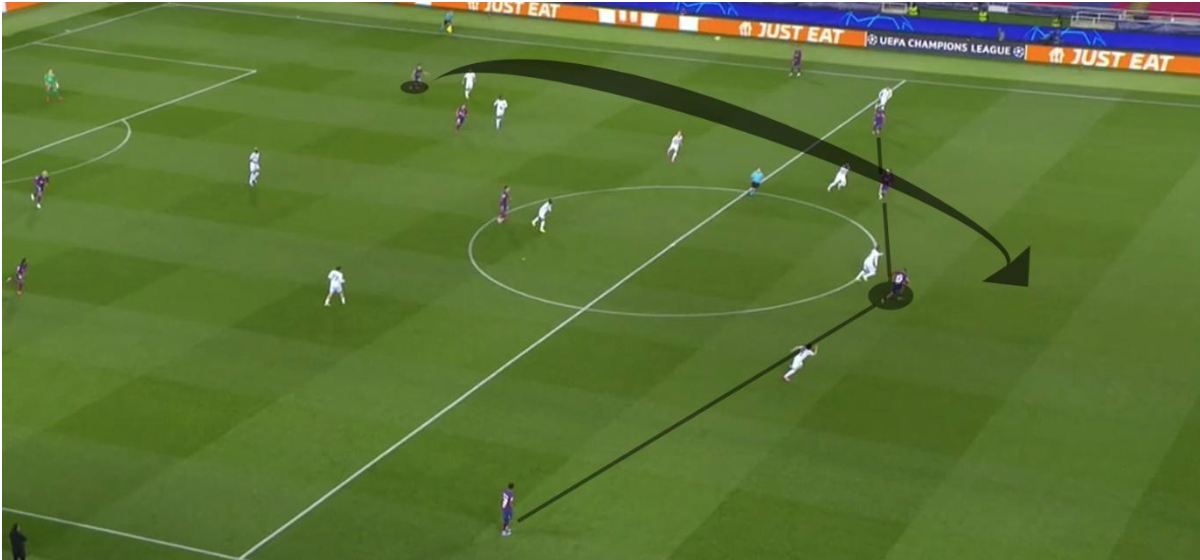
The Culers came close to taking the lead in the first few minutes of the game when Pau Cubarsi freed Fermin Lopez by throwing an air ball that broke Napoli’s defensive line and was taken down superbly by the youngster before being shot over the crossbar. Barcelona was good at holding on to the ball, keeping it moving, and shifting momentum as Fermin made his line-breaking run.
Barcelona’s ball shape assisted Fermin in picking the right run, as Lamine Yamal established his position on the wide touchline, leaving Mario Rui perplexed and helpless to stop Fermin.

Barcelona maintained their formation of four attackers up front, and having an additional man in the attack allowed them to brilliantly set up their opening goal. Joao Cancelo, the fourth attacker in this play, substitutes for Giovanni Di Lorenzo to open up space for Raphinha, who runs into the space that the Napoli centre back and full back have left behind.

Robert Lewandowski was making his run into the box with Fermin on the box’s edge and Yamal unmarked on the opposite end of the 18-yard box. Barcelona did a fantastic job of maintaining the extra man in attack to give more alternatives and chances to strike the back of the net. Raphinha does a fantastic job of controlling the ball that Cancelo plays, and his teammates’ placement is spot on to allow the Brazilian various options to pass it to Fermin, who scored the first goal of the night for the Culers.
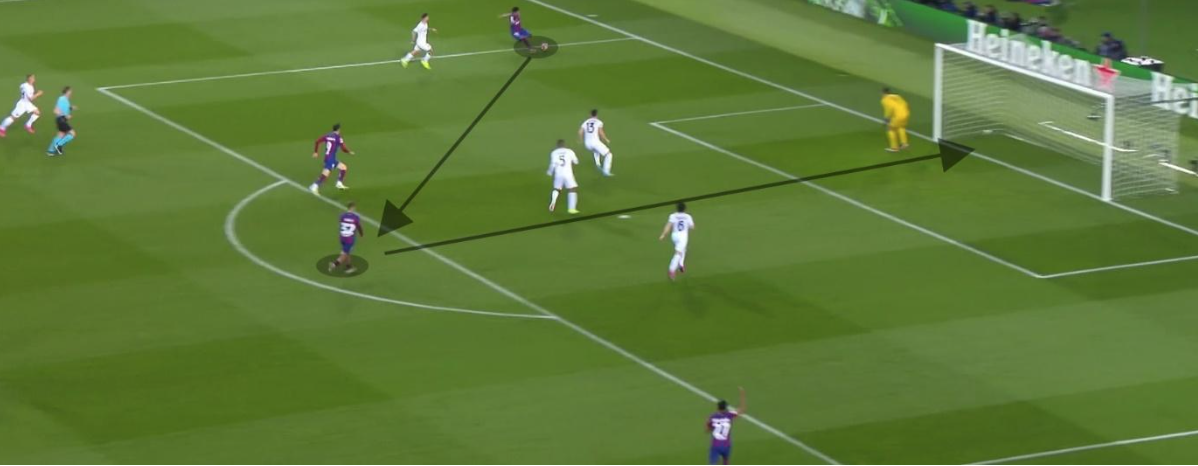
Lewandowski was making his run into the box with Fermin on the box’s edge and Yamal unmarked on the opposite end of the 18-yard box. Barcelona did a fantastic job of maintaining the extra man in attack to give more alternatives and chances to strike the back of the net. Raphinha does a fantastic job of controlling the ball that Cancelo plays, and his teammates’ placement is spot on to allow the Brazilian various options to pass it to Fermin, who scored the first goal of the night for the Culers.
With Lewandowski’s expertise, the Blues found it even more difficult to keep up with Barcelona’s fast-paced play, led by Yamal and Raphinha. Here, Yamal overcame the opponents to initiate the counterattack, but thanks to his quickness and composure, the game ended in a 3 vs. 3 instead of a 4 vs 3. In order to assist Yamal in covering territory and buying time before passing the ball to Raphinha at the edge of the box, Lewandowski made a run between the final two defenders as he dribbled towards the half-way line.
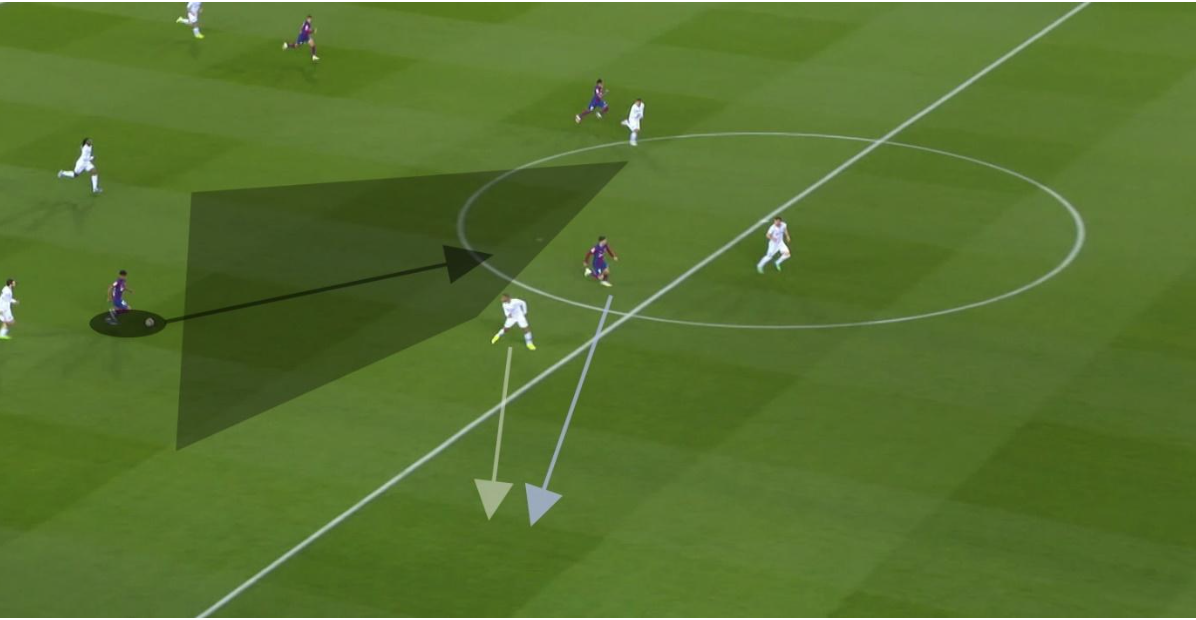
Raphinha cuts back in towards the goal, with his weaker foot, evading his man and unleashing a thunderous shot that clamps the second post and returns to Cancelo, who finished it with an easy strike. Barcelona’s philosophy of adding a man to the defence to support the squad was similar to their attacking inclinations. The Blaugranas used a five-man backline to try and cut down on line-breaking passes and through balls when defending, but their man marking and offside trapping were subpar and might have caused them serious damage during the match.

Here, Ilkay Gundogan lowered himself to become the fifth defender, but he was unable to mark Matteo Politano, which allowed him to slip by Cancelo and into the Barcelona 18-yard area. The ineptitude of Barcelona’s back line is another thing to note. Cancelo and Cubarsi attempt to play the offside trap, but Ronald Araujo puts Politano onside because he lacks the composure and intensity to position himself to prevent danger and serious circumstances.

When Politano enters the penalty area, the defence tries to close the gap left by him to stop him from passing the ball to Oshimen. However, Gundogan is unaware that Rrahmani is running into the 18-yard box, where Politano spots him and makes a gorgeous minus pass that Rrahmani finishes it first time, giving the visiting team hope.
The two teams shared possession almost evenly, but Barcelona made the most of it. With 10 shots on goal—six more than the opposition—and only one off-side call all game—more of an unintentional one inside Alex Meret’s 6-yard box from a corner when Yamal made a run to the behind post, initially blocked and the return shot took a deflection of Yamal’s feet—the home team demonstrated their patience, poise, awareness, and improved chemistry.
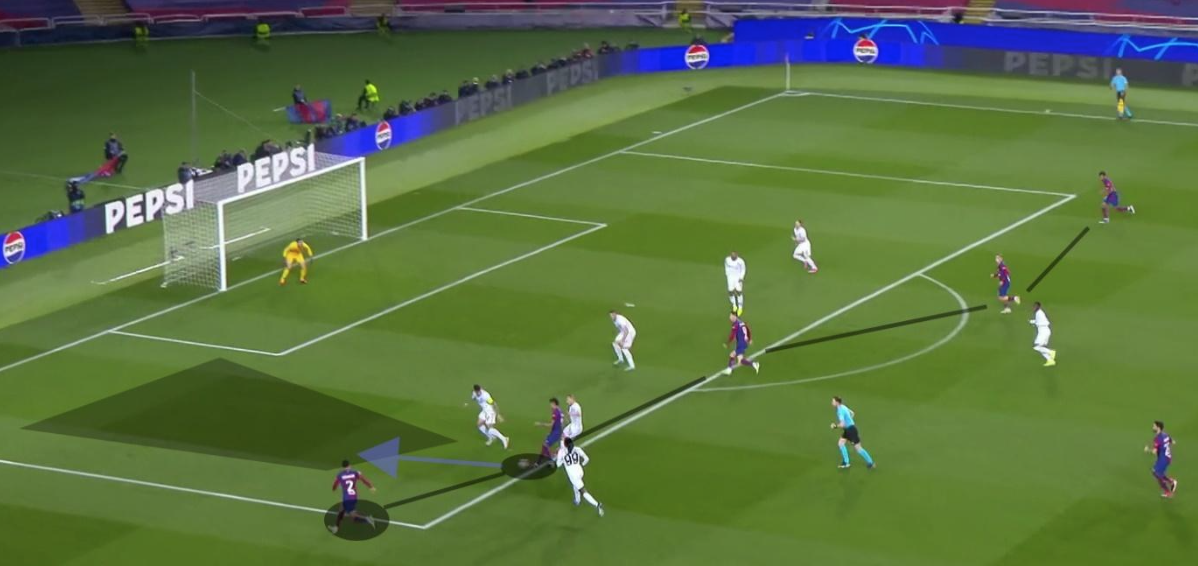
By retaining the extra man, Barcelona showed how intensely they played. Raphinha first played the ball to Cancelo, but by the time he touched it and moved his body to try to pass, all the players were in the box in a good position. Gundogan was at the edge of the box when Raphinha received it back, and because he is so one-footed, he had to forcefully align his body to take the shot, which went straight toward the goalkeeper. The Brazilian forward would have immediately put the game to bed if he had scored.
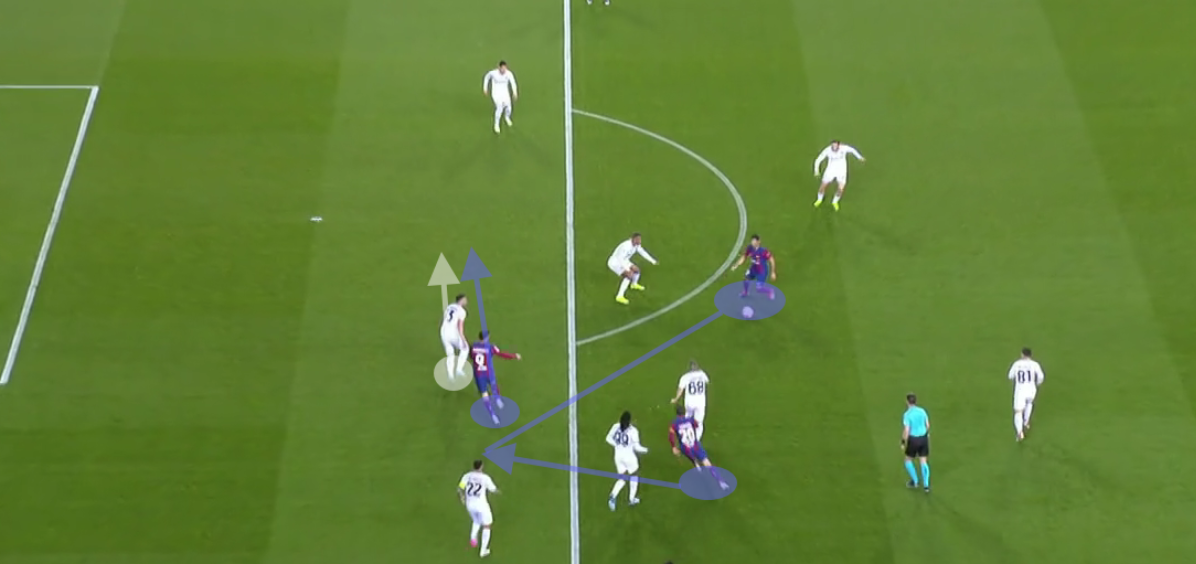
The focal point of this move has been Sergi Roberto, who plays a swift one-two ball with Gundogan and enters Napoli’s backline before Gundogan breaks the line with a lovely weighted pass that opens up space for Roberto to race into. He has been the focal point of this move, but Lewandowski also contributed significantly by advancing in the direction of the penalty spot, which freed up room for Gundogan to pass to Roberto.

Roberto was heading for the goal when the goalie lunged forward, showing selflessness by setting up Lewandowski for the third goal and ending the game to ensure FC Barcelona advanced to the quarterfinals. This move was expertly planned and carried out, evoking the spirit of Barcelona’s golden age of football.
With authorization and command throughout the game, FC Barcelona performed a well-prepared and well-executed encounter. While the midfield offensive skills were outstanding, they occasionally played sloppily and need to improve their defensive play because they occasionally left gaps and got stuck when man-marking and making combined plays. Even though there were times when the Culers could have lost badly, they persevered and showed unwavering grit to advance past the Round of 16.
It has been nine years since Luis Enrique guided Barcelona to a treble in his first season in charge, as well as the final season in Xavi’s legendary playing career for Barcelona. The Blaugranas haven’t reached the UEFA Champions League Final since that win against Juventus, but they have a golden opportunity to get back to the biggest match in club football and allow Xavi to ride off into the sunset. If they can make it to the semifinals, they will face off against either Atletico Madrid or Borussia Dortmund. First, however, they’re going to have to get past Luis Enrique’s Paris Saint-Germain, who are back in the quarterfinals after a three-year drought.
By: Sive Vishwa / @sive_vishwa
Featured Image: @GabFoligno / Pressinphoto / Icon Sport
